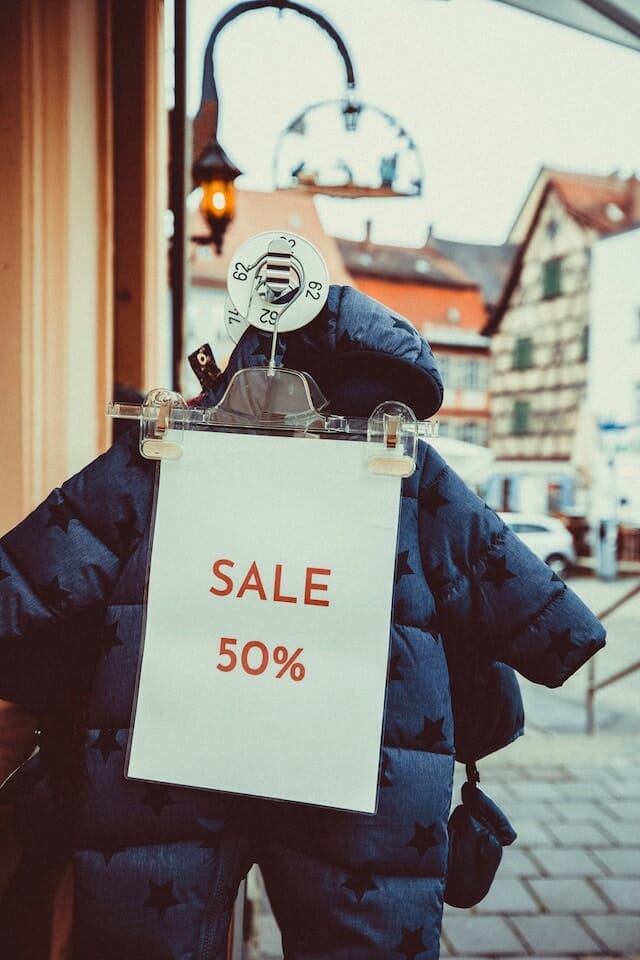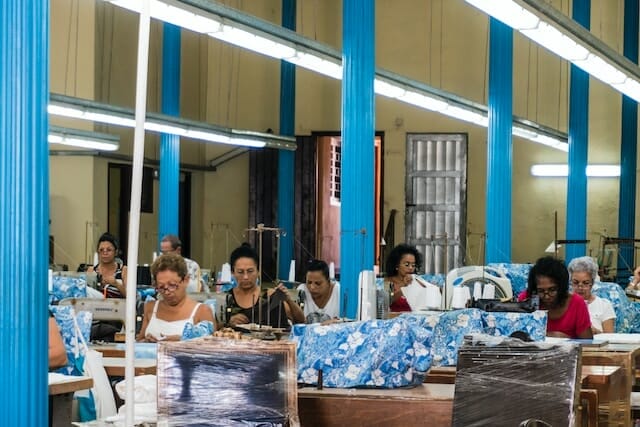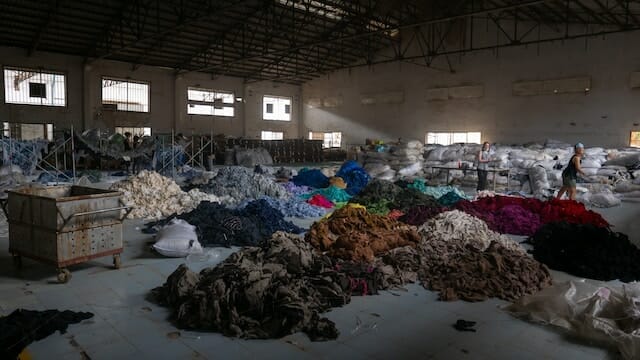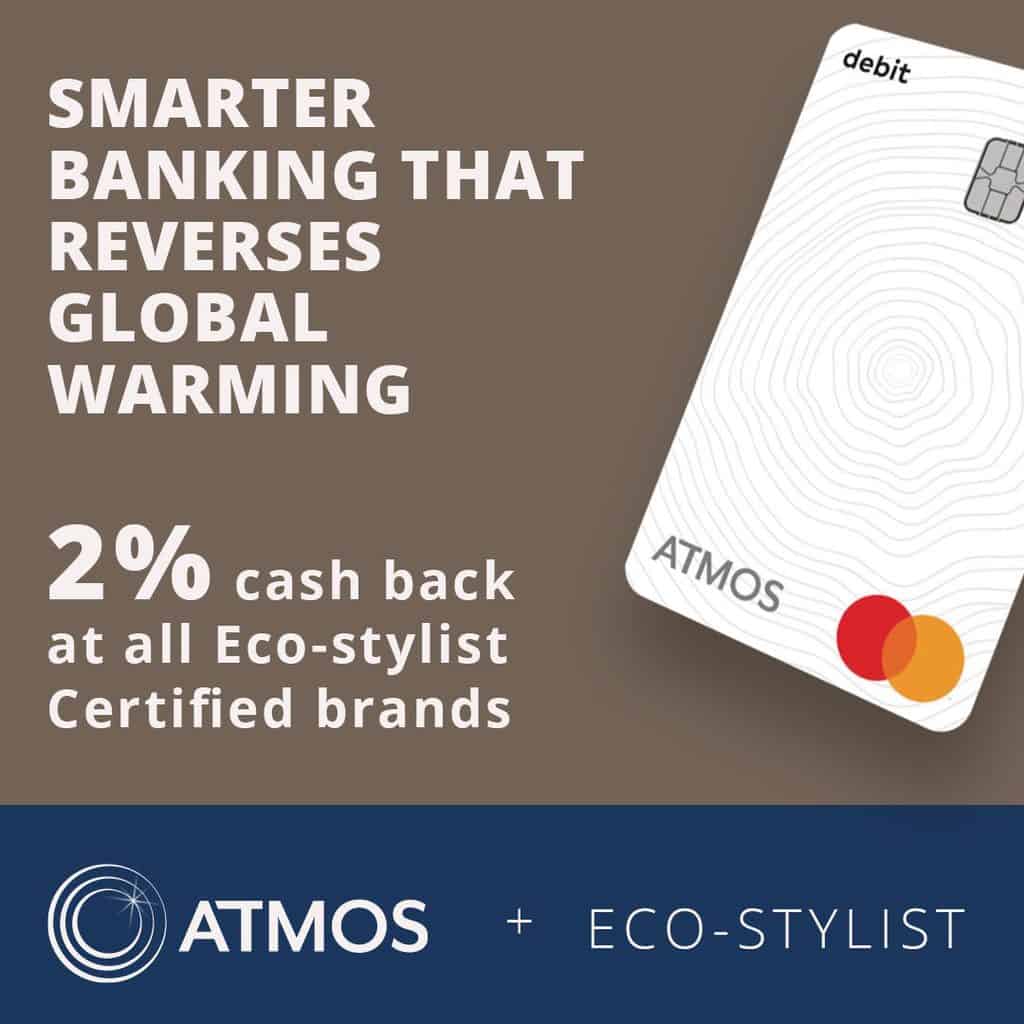
The reason you can get those printed pants for $10 at fast fashion brands like Forever 21 is not because cotton suddenly became cheaper or Cinderella’s fairies decided to start using their magic to make clothes appear out of thin air. And we all know that. We are just too comfortable not having to open our wallets, to save up for the things we want to wear, because fast fashion, influencer brands, and known retailers (even luxury brands) have made it oh-so easy to access “variety” and newness.
As someone who has made her crochet top and has embroidered her clothes, I can tell you for a fact, making pants cannot in any universe cost $10. Making things takes skill, time, and raw materials. None of these are accounted for in the ridiculously low prices that fast fashion has been getting us used to.
Somebody always pays the cost, and it is not you or I, the people who yes, work to make a living, but can afford to live a dignified life. It is mostly women from the Global South, where I come from, who end up paying the price through unhealthy working conditions, harassment, unpaid wages, and other horrible things they are subjected to on a regular basis.
The worst thing is, this is nothing new. This system of oppression is the one fashion was designed to operate under, fast fashion has just made it more terrible and visible in the age of social media. The issues of our industry go back to colonialist mentality, extraction of resources, land theft, and slavery, both historical and modern.
To understand this issue, we spoke to Aja Barber, a writer, stylist, and consultant who works at the intersections of sustainability and fashion. She is an unapologetic voice that calls out the system of oppression, privilege, and white supremacy fashion is built on.
Her book, Consumed, has been an eye-opener on how colonialism, climate change, and consumerism are intrinsically linked and how we, as citizens, can have the agency to redesign the culture and systems that brought us here.
We sat with Aja, and her cats, to talk about why your cute sequinned fast fashion top isn’t affordable, why our climate crisis is an intersectional and feminist issue, and the importance of shifting our culture of consumerism and waste colonialism, among others.
Cheap Clothing and the Human Cost of Fast Fashion

Adela: One of the things I found refreshing about your take on fast fashion is how it is not affordable. Could you explain that?
Aja: Yes! The crucial question is affordable for who? The consumer, only.
It is not affordable for the people who make our clothes without even earning a living wage. The thing is, brands keep using this rhetoric that they are lifting people out of poverty in the Global South when in reality what they are doing is choosing to go to countries where regulation is close to none and they do not have to pay a fair wage to the people that make the clothing they profit off of.
What they are doing is using the charitable excuse that without those terrible jobs, people would have none, to justify oppressing people of the global majority for their wealth accumulation.
Fast fashion is also not affordable for the farmers that make our clothes. Farmers everywhere feel mistreated and underpaid.
And it is certainly not affordable for our planet. To produce at the scale we do to satisfy the average fast fashion consumer that buys 68 items a year.
In America, we are a big part of the problem. We are the second largest consumer of fast fashion, after China, but their population is bigger than ours.
And it is not people who are poor who are buying tons of new disposable plastic clothing. The 3% of working class and poor people in America are not the ones making fast fashion giants rich.
And also, it is not the same to be poor in a country in the Global North, like mine, as it is for people in the Global South where garment workers and farmers are, again, suffering the disproportionate consequences of climate change, and environmental loss, caused by colonialism and consumerism.
Adela: This is why I think it is relevant to talk about how people constantly hold sustainable brands to a higher standard than brands actually harming us and the land. For example, when asking them to be “affordable”, when what they are doing is charging a fair amount that allows them to pay garment workers fairly. What are your thoughts on that?
Aja: This goes back to the affordability conversation.
As I wrote on my platform, when people tell a brand like Loud Bodies that their pricing isn’t inclusive, all I can think about is how this system has made us think that paying living wages isn’t inclusive. The idea of something being “price inclusive” in the first place exists only because nonwhite people are trapped in slavery making clothing for people in wealthy countries to enjoy. Fixating on this issue with sustainable brands, for example, is an act of privilege that devalues the work of farmers, garment workers, and every person involved in making our clothes.
I do think people are becoming more informed, but they are going for the Goliaths of the space, like SHEIN, a giant like them is easy to attack, but people still get surprised when brands like Anthropologie “cannot afford to pay its people”. And we as people need to do better, we need to hold accountable all the companies and individuals who are getting wealthy from a system of oppression.
The Environmental and Climate Impacts of Fast Fashion are a Feminist Issue

Adela: In your book, you talk about how climate change and social justice are feminist issues. Ones that mainly affect global south women in the fashion industry. Could you talk about that and about how it would be beneficial to have women in power to fix this mess?
Aja: When it comes to how women are impacted by climate change, they are affected in a completely different way than men because many of us are already marginalized. This is because climate change is what the US government refers to as a threat multiplier.
What that means is that if you are already marginalized in certain ways, you will become more marginalized when resources are more scarce and tropical storms are a daily thing.
We know that women typically are in charge of things like providing food for their family or gathering firewood, childcare, and caring for the community. The oppressions and pressures we face will feel multiplied when we are fighting for our lives against extreme weather every single day. And so it’s a feminist issue because we’re at the front of it.
But I think it’s not so much as just having women in power because, you know, the UK had a female prime minister and she sucked. It’s more about having people in power have intersectional conversations with meaning about our current crisis.
We have to push the envelope further, we have to get people in power that understand these environmental and social issues and can look outside of their own immediate realm of privilege and also have the foresight to look at what it’s gonna look like a few years from now. We need people that believe in science and listen to scientists, people that don’t hate refugees because there’s gonna be a lot more refugees in the future. Because the climate crisis will create a refugee crisis everywhere.
Something which we can already see happening in countries of the Global Majority. It’s not fair that the Global South is experiencing climate change in a way that the Global North isn’t. It’s not fair that the entire continent of Africa is already bearing a lot of climate change consequences when they account for 3% of carbon emissions. This is why issues of climate change are not just about gender equality, they are about equity and intersectionality.
And the thing is those who don’t have as much privilege and power, have a lot of the solutions. I’m already looking at how countries in the global south are preparing for climate change, and it feels like the US and the UK are in denial.
Look to the Global South Experts for Ethical Solutions
Adela: Speaking of how the Global South has been preparing for a while for our climate and social emergency makes me think about how you and Dominique Drakeford talk in your book about how Indigenous and Afro-Indigenous people are the original sustainability experts.
Why is it then, that we rarely hear the voices of black and indigenous people as well as garment workers in sustainable fashion panels? Why aren’t their voices elevated or paid for their knowledge?
Aja: Well, that’s a question about white supremacy, isn’t it? I remember growing up and being really into environmentalism from a super young age, but not really knowing if there was a place for me in the conversation because the whole movement didn’t look very black at all.
It is a marketing issue. I think back on the experiences of my grandmother in Alabama. She is an incredibly sustainable person: she catches her rainwater to water her garden with, she grows her food, and she hangs her laundry on a laundry line.
All the things that she does are practices that are associated with poverty because she isn’t someone who has a bunch of money. But these are the sorts of practices that we need to celebrate and champion in our society if we want to get out of this mess.
We need to get people behind these everyday practices that everyone could do, like composting. When I think about the amount of food waste that goes to landfill, if we could just incentivize people to start composting some of that, it would make a difference.
Textile Waste is a Colonial Issue

Adela: The food waste problem is an issue that closely resembles fashion’s waste issue. We don’t think about where our discarded items or food end up and it usually goes to countries in the Global South, into marginalized people’s neighborhoods. Can you talk about this?
Aja: That’s the problem with waste colonialism. We fool ourselves into thinking that you just throw things away and they are gone, but nothing that is created on this planet disappears.
It ends up being somebody else’s problem. Every single menstrual pad I’ve ever used that had plastic in it is still on this planet. It horrifies me to think about that or about every plastic garbage clothing piece that I bought. Where is it now? And whose backyard is it polluting?
This pollution also exacerbates all the other issues the people who have to deal with it are facing, because they are most likely going to be marginalized.
Adela: Where should we be looking for solutions to this waste colonialism issue then? Because there is so much circular fashion greenwashing going around now with famous fast fashion retailers claiming they are sustainable because they have recycling bins in a handful of stores.
Aja: We should be looking to the Global South for solutions, like the hands-on market from Kantamanto that I talk about in my book. I think it is a prototype of how malls should look like.
The Kantamanto market has trim shops, it has tailors, it has people that will dye garments for you. It’s got everything so that you can buy a garment and make it your perfect fit. It’s the type of thing that we should have in our society and we don’t. This is just a simple way that the Global South is modeling the ethics and behavior that we should be moving towards.
Yet the face of it is always going to be somebody who isn’t a part of the solution in that way and isn’t as marginalized. Sustainability has a marketing issue. The worst part about it is that some of the world’s worst brands will then become very diverse on their grid when they’re trying to cover up something stinky.
Greenwashing and Socialwashing in the Fast Fashion Industry
Adela: This is where the circular greenwashing and social washing come along.
Aja: Yes I would say people of color get to be the face of things when it’s super shitty. A great example of that is the recent SHEIN influencer trip.
It is not a surprise who they took on that trip. Whenever it’s time to greenwash, things start looking incredibly diverse. It’s also not a surprise that SHEIN didn’t invite any journalists on the trip. Because they didn’t want anyone that would ask hard and challenging questions.
And the sad thing is that there’s always someone who confuses that cover-up action with a seat at the table. When you’re marginalized and you already don’t get a lot of opportunities sent your way, it’s easy to get all too excited and drink from a poisoned chalice.
Communications and Consumerism in the Global Fashion Industry
Adela: And speaking of being a part of that poisoned chalice, I also want to touch on how colonial ideology and communication have played a big part in our current issues. As you say, marketing is a powerful tool to dehumanize marginalized people so that colonizers can justify oppression.
Given the power of communication then, is there anything you think is missing in the storytelling around sustainability and fashion, in terms of tone, content, and people involved, that could get us to change people’s mindset and encourage action?
Aja: It’s such a complex thing. I think what we really need to tackle in our society is consumerism. Because people believe that consumerism is what you do to be a good, upstanding citizen of society. Consumerism has us in a death grip.
I think people get frustrated in this conversation because we are told ‘just consume, just buy things. It’s great’. And then they’re getting information that actually it’s not great. So I think if we can pick apart the hold that consumerism has on people in our society, we can get them to think about these issues more deeply.
We need to get to that point where people ask themselves: why do you wanna buy these things? What’s behind that? Do you ever feel like maybe you are being marketed to in a way that’s less than honest? Do you ever feel a little bit uncomfortable with this system? Let’s dive into it.
Until we can do that, I don’t think people are really gonna take sustainability super seriously, to be honest, which is why I focus on consumerism and scale, because I feel like that’s the key to getting people to start jumping in the sustainability conversation honestly.
Adela: That makes sense. We looked at how that consumerist attitude in particular, encouraged by fast fashion’s mindset of buying something new and disposable every day, and not committing to your clothes, actually makes you unhappy.
Aja: That’s so true because I can say now that I’m not on the fast fashion train, I’m so much happier with my purchases when I make them.
But that was not how it used to feel when I was on that train. That shopping speed meant you could never really truly fall in love with a lot of your clothing because you were always looking for the next thing.
Additionally, we think that we have a lot of freedom within fast fashion systems to explore our style, but I would argue that you probably have less because the trends that you’re seeing in stores have been picked out months in advance for you by a team of experts.
You might think that you happen to like that color but, in actuality, that color has been discussed in thousands of boardrooms across the world and picked up well in advance.
But, when you start to dig into your personal style and find the things that you love, it completely changes your relationship with clothing. Now I can pretty much walk into a lot of stores, look around and go ‘great, there’s nothing for me’, and leave. That didn’t use to be the case. I used to go into stores and feel really stressed out because I thought I had to buy something.
That’s why I think unpicking consumerism is such a crucial part of all of this, which is why I focus on the consumer side of things in my activism and communications.
Adela: I think it’s a great step, honestly, because it makes the conversation personal for people. Because of how big these issues are, we find it harder to be compassionate as the circle expands. Unless you’re doing Buddhist compassion practices.
Aja: Absolutely, which is why, when I invest in something from a company that I know a little something about, it completely changes how I’m gonna treat that garment because I know that they’re employing women and paying them fair wages.
Knowing the story behind a brand, and the people involved in it, also makes you wanna commit. It makes you wanna be part of their purpose, their narrative instead of just buying mindlessly, and then moving on to the next thing.
Adela: And to make that leap with our relationship with our clothes, we also have to fight what you have pointed out as the shame we have been taught to feel around some sustainability practices. For example, I wash the Ziploc bags to reuse them, because my mom always did and some people find that cringy. Can you talk about that? Where does that shame come from?
Aja: I used to hate when my mom would do stuff like that… And now I look back and she was right about a lot of things, not everything, but she was definitely right about some things. I wish I could have just seen that sooner.
But at the same time, I know I didn’t agree with her because I grew up in a super affluent area. We were not super affluent and so those sorts of habits made me even more of a social outcast. So when I saw my mom do these sustainable practices, I was like, ‘God, can you just be normal?’
Adela: And is that wanting to belong part of what makes us ashamed of some sustainable practices, like wearing the same outfit twice?
Aja: I think so. Wanting to belong, to fit in, to be in with the crowd, that’s a part of the shame that we feel surrounding sustainable practices, which is so sad.
Luckily, now, those things are in style. I talk about how I’ve been shopping for my clothing on eBay since 2000. And whenever I would tell people about it, back then, they’d make me feel weird. So I just stopped talking about it. If someone said to me ‘Don’t worry, in 23 years, this will be your entire platform’, I would’ve been like, ‘What are you talking about?’
I remember my first eBay clothing purchase, it was a pair of loafers from BCBG. They were super fancy in the early two thousands, and I wanted a pair of their loafers. They were $300 full price, which was a lot. And then I found somebody was selling a pair for $65 on eBay. So I bought them and I was so proud.
Then I realized, ‘Oh crap, I could just buy all of the designer stuff that I can’t afford this way. I just have to wait for a rich person to sell it’. But that also clued me up early into the fact that the fashion industry overproduces. Cause I found that somebody was always selling the thing that I wanted. If someone’s always selling something, how many products are floating around?
Overproduction and Consumption
Adela: Can you tell us more about that? The overproduction side of fashion and how you got into the sustainability space?
Aja: Absolutely! When I volunteered in a charity shop, that was the real horrifying moment. I compare my experience there to the mythology of Prometheus, who got chained to a rock for giving humans fire. His punishment was that every day the great Eagle would come and peck his guts out, and then, overnight, his insides would regrow and it would happen again. That is how I felt working in a charity shop: every day that I would come for my volunteership, there would be donation bags up to the freakin ceiling, no matter how much work I had done the day before.
Of everything that arrived, we would take maybe 5% because we couldn’t house it all. And then the other 95% would get sent off to another location. I would think ‘we are one of thousands of stores in the US. If everybody is having this problem, where is all this going?’
I guess I never really felt that great about the systems of consumption and fast fashion particularly as someone who likes to make things and is curious about how things are made. I was always like, ‘but how do we make it so cheap?’
Adela: That curiosity, I feel, is what we all need more of.
Aja: Exactly. If we were all just a little bit more curious about our planet and people, we would have a much better world. I want people to be curious.
I want people to have hobbies. And sometimes the problem is not only that people are not curious, but they think they know. Everyone thinks that they know something about how the fashion industry works.
Unfortunately the internet also encourages you to feel like you should have opinions on everything, and it makes you believe that your opinion is fact. If I don’t have all the facts, if I’m not going to be one of the most informed people in that conversation, I won’t take up that space.
Adela: What is your take on secondhand fashion? How much of a solution do you think it can be?
Aja: I don’t think it’s the solution at all. Especially, without us talking about overconsumption and how buying at the same speed to keep up with the trends, even if it is thrifted will still turn into clothing ending up in landfills. Secondhand markets will always exist. They have always existed since the beginning of time. People act like it’s new, especially with the gentrifying thrift.
But if every person on the planet just bought one secondhand garment instead of a new one, it would have such an earth shattering response. However, the solution will always be holding these brands to account.
What can you do about it?

Adela: Speaking of solutions, in a narrative that so often tends to lead to doom and gloom, I like looking at what’s going right. At the people and groups doing good. What is something that gives you hope in this landscape as an activist?
Aja: For me it is that I see so many people finally joining the conversation around fashion sustainability and consumerism and I’m just happy for that. I’m just going to take the win. And for me the win is getting people who have formerly not wanted to be anywhere near this conversation involved in it. It is seeing people realizing the harms of SHEIN, because at one point in time it was pretty much untouchable.
So, realizing some of the messaging that I’ve been really working hard to normalize in this space is starting to actually be a part of the daily conversation, that gives me a lot of hope.
I also think that people are starting to notice that we’re not disconnected from these systems as much as we’d like to believe that we are. This is why we are seeing more interest in things like rentals because it makes no sense to buy a new dress for every single wedding of your friends you have to go to.
But we need regulation because as more people come into this conversation, brands find new and innovative ways to greenwash. Because they recognize that clients are starting to pay attention and want their products to be made sustainably.
Adela: And part of that is that we have been getting more honest with our role in the system. Why do you think that is so crucial?
Aja: Because people love to go back and forth about how individual action has no impact. But the reality is we need individuals to start looking at ourselves because so much of the system is run off of trends we buy and we tell ourselves that it has nothing to do with us. But the truth of the matter is brands are responding to individuals that are changing, and that’s why you’re seeing more greenwashing.
I think that the individual has the power to collectively shift the culture. And when we shift the culture, we change the demand for certain products and brands will definitely respond to that demand.
Because taking your money away from brands that are making horrible things is definitely gonna have an impact, using your voice when you see a brand that’s doing something has an impact.
What can sustainable brands do about it?
Adela: What would you advise brands to do in terms of sustainable storytelling?
Aja: There are only a few brands that I choose to work with. But the ones with whom I have done so in the past are taking their own unique approach, but it’s an approach that I think is quite good.
eBay, for instance, has partnered with Love Island and they’re really bringing the idea of pre-loved fashion to the mainstream, because that’s how you get into the ears of the youth.
Meanwhile, Vestiaire Collective has done countless partnerships with the OR Foundation in Ghana and they’re helping push and steer legislation, in partnership with them.
I’d love to see more groups in the Global North who are able to profit from these systems, look to groups in the Global South who aren’t getting the best cut off the pie and join in coalition.
That’s what I’m looking for more of from big companies. To form coalitions with groups of the Global Majority, it isn’t just about reaching the consumer in our neck of the woods, reaching the citizen here. It’s about looking at the places that are overlooked and thinking how do we do more there?
Because we are not gonna get to where we wanna be without solidarity.
More Related Posts
- How Influencers Accelerate Fast Fashion
- Is Ethical Fashion Expensive? A Guide
- Racism in the Fashion Industry

Adela is a Colombian storyteller, content maker, strategy consultant, & event producer, specializing in sustainable fashion, mental health, and gender issues.










